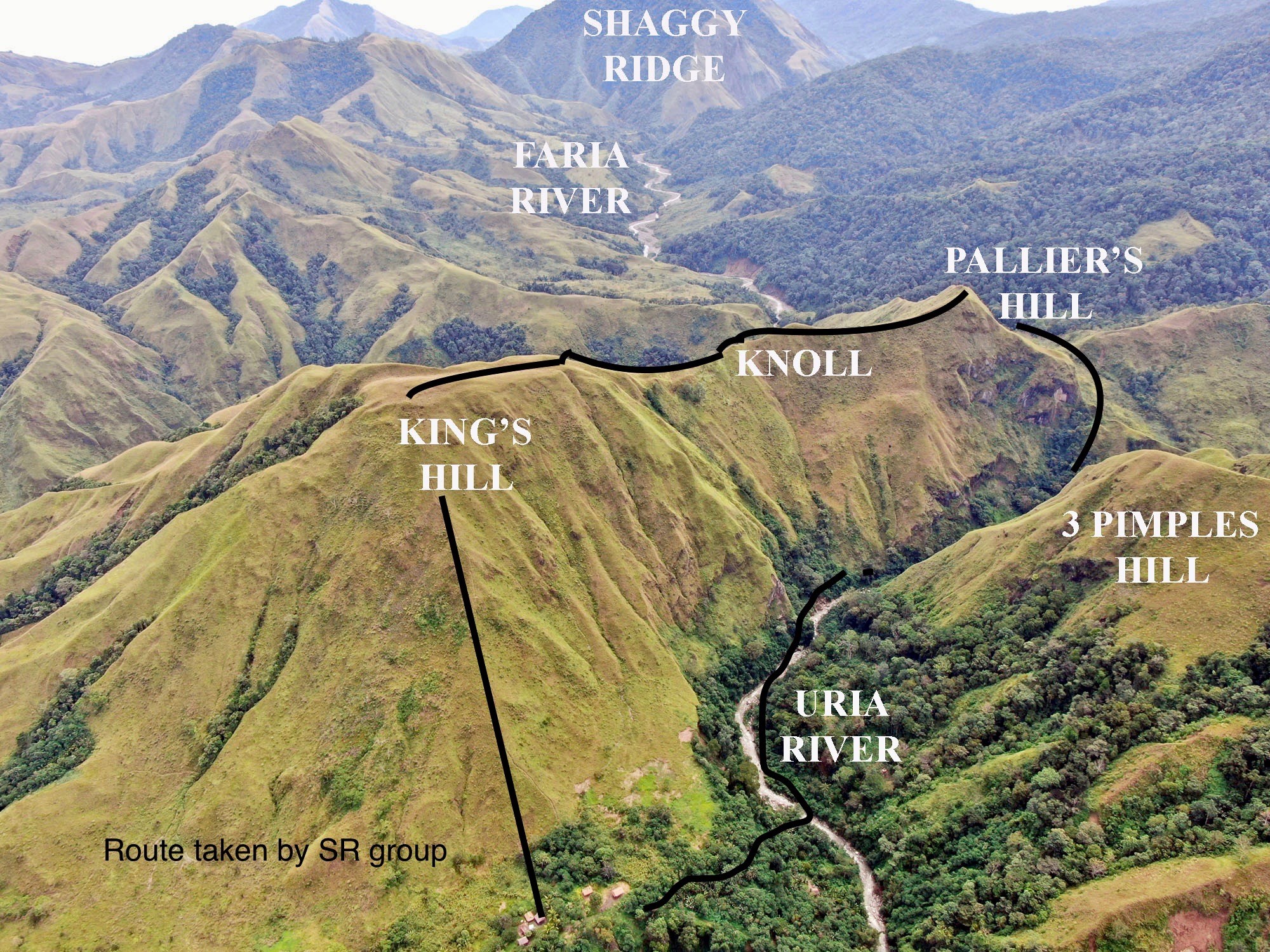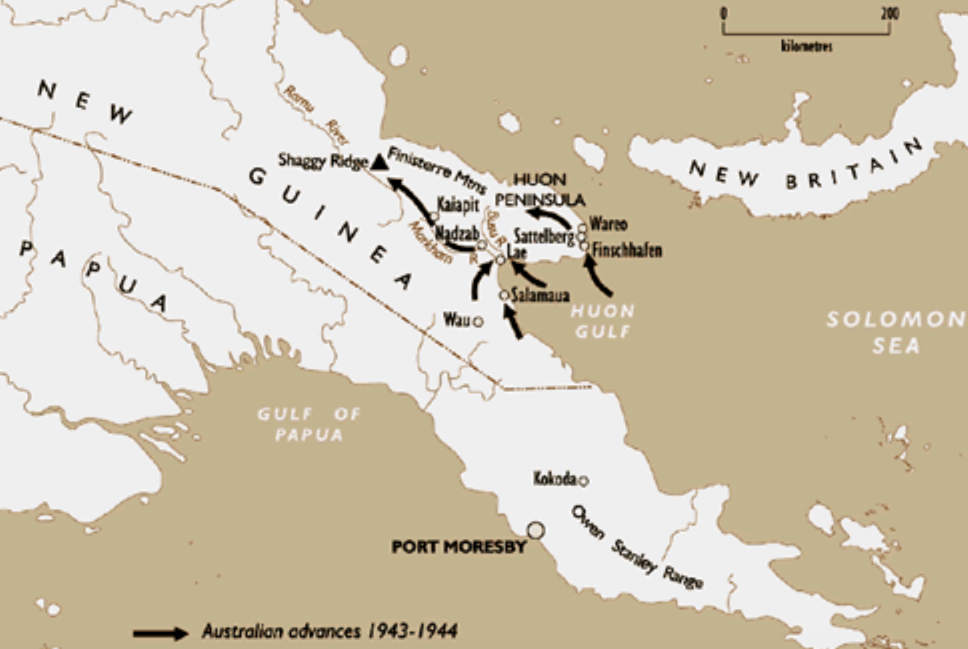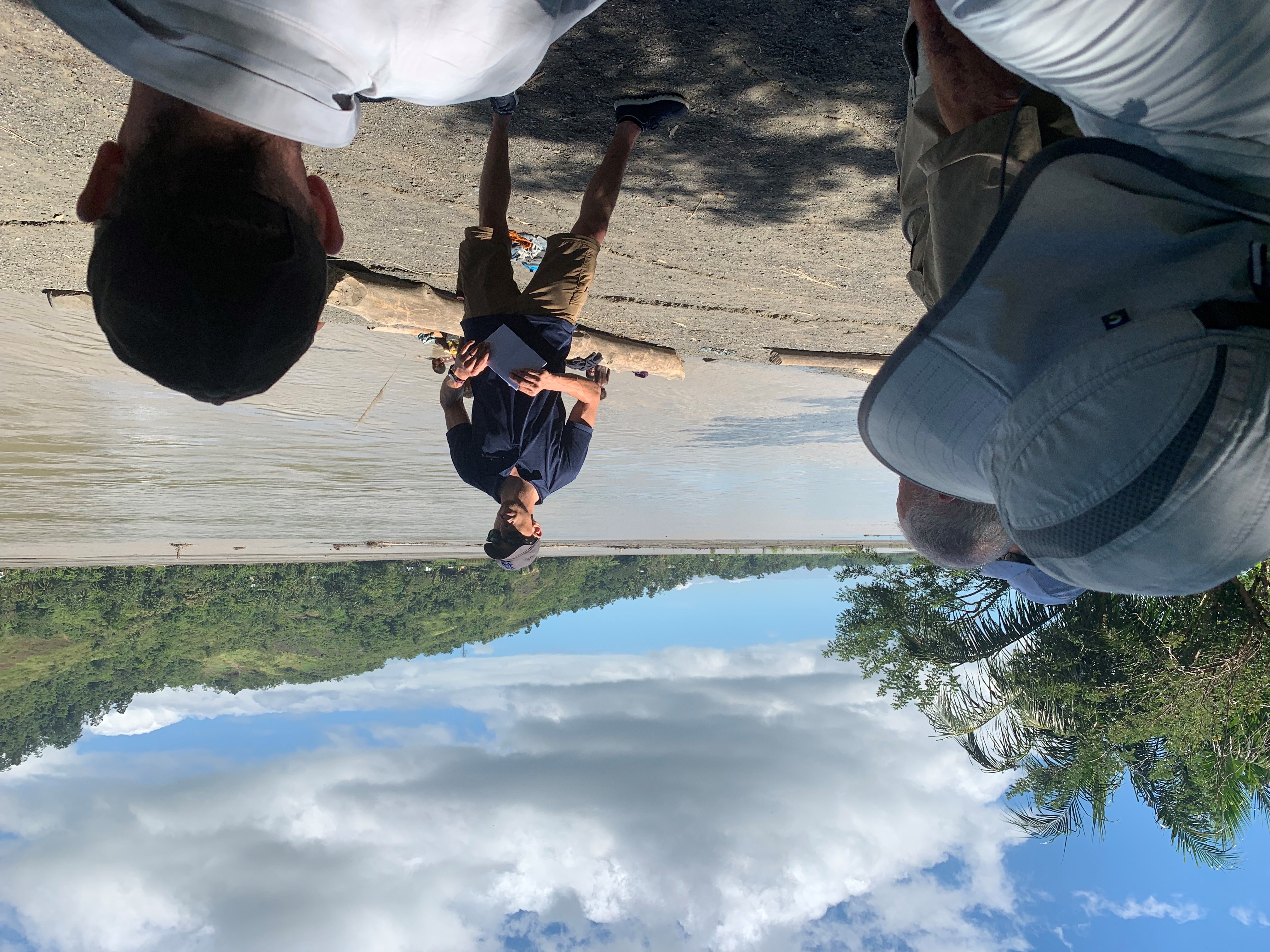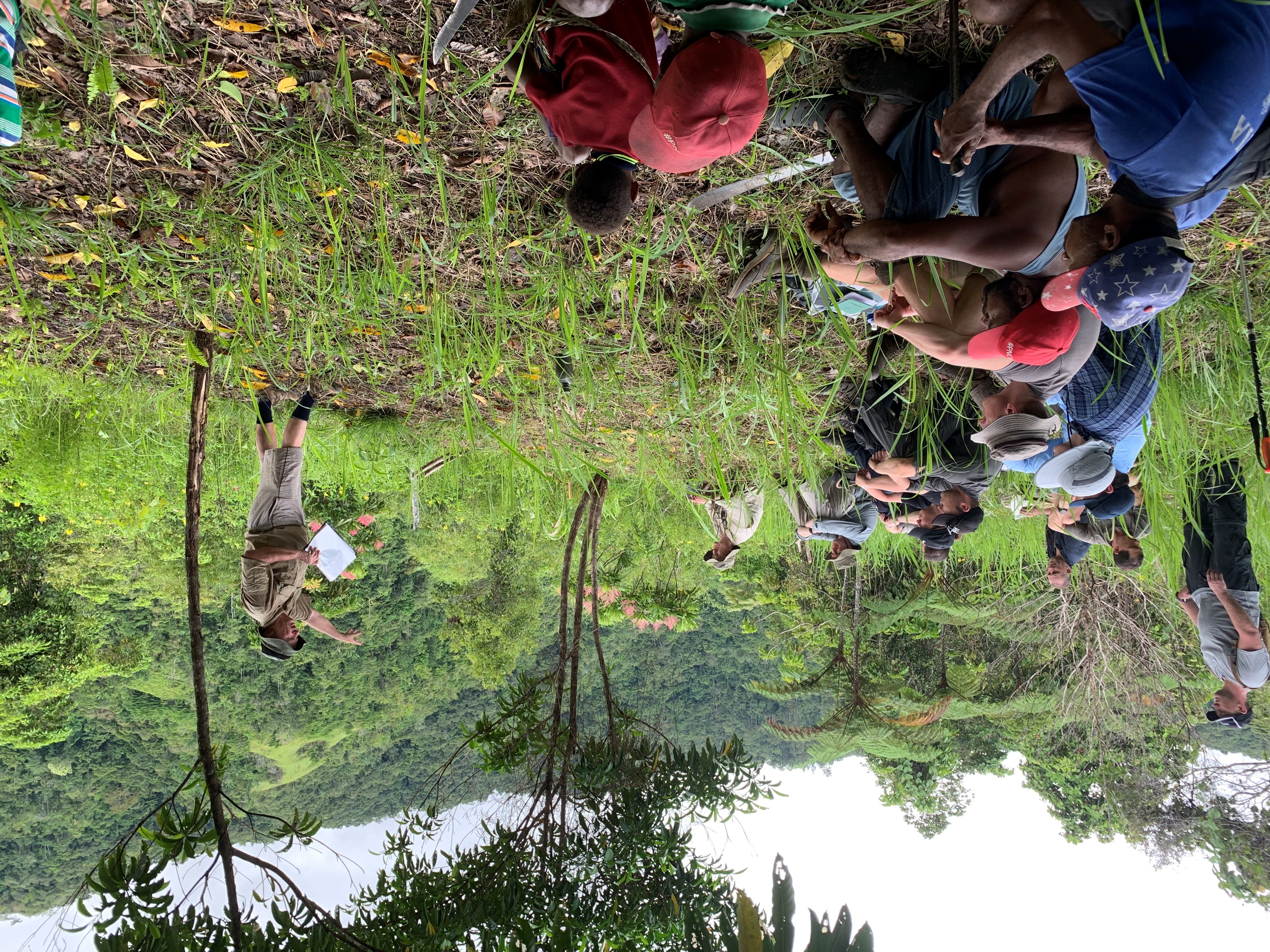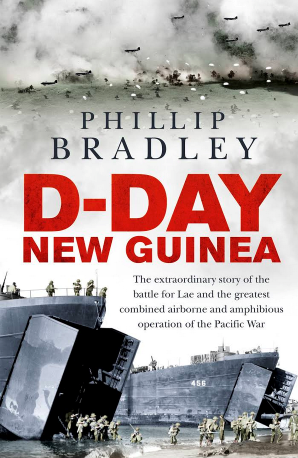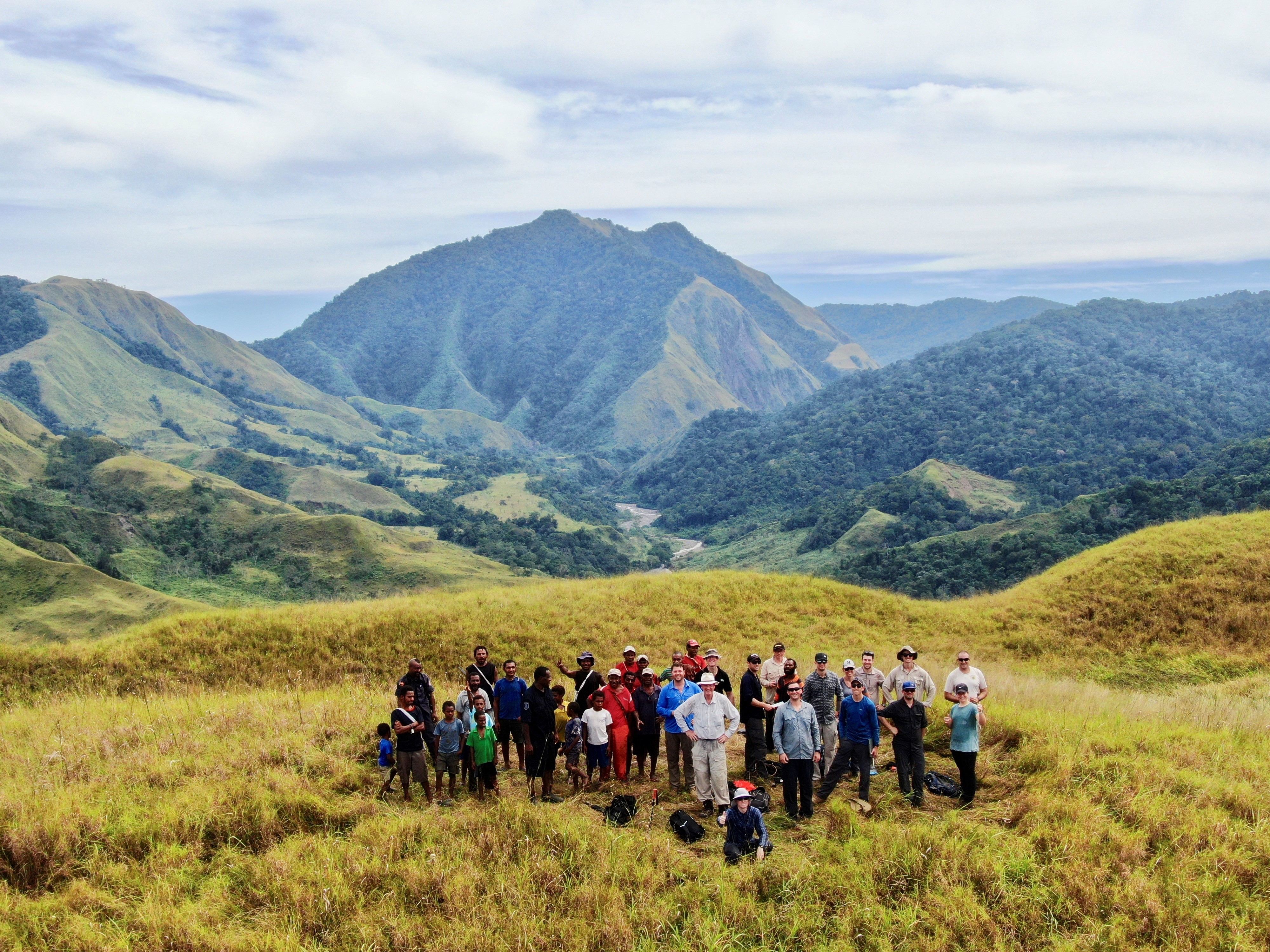1943 Australian New Guinea Offensives
The AARC May 19 Staff Ride to Papua New Guinea was an ambitious undertaking. Consisting of a group of hand-selected mid-level officers from a variety of corps, units and training establishments, it commenced by flying into Nadzab. In September 1943 this large airfield near Lae was secured by the US 503rd Parachute Infantry Regiment, reinforced by elements of the Australian 7th Division. This high-risk air assault supported a bid by the Australian 7th and 9th Divisions to surround and isolated the Japanese forces in Lae that had the potential to fight to the death. These divisional advances, over huge fast-flowing rivers, made fascinating contemporary case studies. With the variety of experience within the Staff Ride group, they ensured a full and diverse range of professional discussions. Indeed, holding these discussions on the ground where the actions took place, the group quickly came to appreciate the conditions and realities of operating in this challenging environment. This was a valuable experience for those who might need to plan future Australian training and operations with this crucial regional partner.
The next stage of the activity reinforced these environmental and logistic difficulties. After a small boat transit to Salamaua on the coast south of Lae, the group walked with packs for many kilometres up the stunningly beautiful Francisco River surrounded by almost untouched jungles. Home for the next couple of nights was the most welcoming traditional settlement of New Komiatum - just a few wooden huts, with no power or running water.
The group soon discovered that any discomfort experienced so far was to be considerably magnified by the effort required to get to the local 1943 battlefields. 'Ambush Knoll' and the 'Old Vickers’ position both required long walks and steep ascents in demanding conditions. The group was, however, accompanied by curious and protective locals who were fully aware of the war-time actions and greatly assisted with navigation. Participants, therefore, gained a visceral understanding of the challenges involved with fighting under such conditions. Indeed, Australian forces in the lesser-known Salamaua Campaign were at the end of lengthy jungle supply lines. Soldiers had to contend with hunger, disease and face a determined enemy in well-prepared positions. These circumstances severely tested the human dimensions of leadership, morale and tactical competence.
The Staff Ride was able to make its way back down the Francisco River to Salamaua on locally made rafts. Here it examined the incredibly successful Kanga Force commando raid of June 1942 which resulted in at least 100 Japanese troops being killed for the loss of only three men slightly wounded.
Returning to Lae by boat, the Staff Ride travelled up PNG’s main highway through the Markham and Ramu Valleys. This route followed the 7th Division's operation after the capture of Lae that culminated in the battle for Shaggy Ridge. Within sight of this enormously challenging feature, the group had another steep walk to examine the textbook assault on Pallier's Hill. This attack, which demonstrated the application of sound assault tactics on demanding ground, was the subject of an excellent post-activity podcast by one of the Staff Ride members.
The final phase of the activity took the group to Finschhafen. This was the scene of the 9th Division's September 1943 amphibious assault onto the stunning Scarlet Beach - less than a week after the capture of Lae. The beach itself would be subject to counterattack, and the entire operation is a self-contained study in offensive, defensive, mountain, combined arms and amphibious warfare. Using the detailed maps in LTGEN John Coates's magnificent book Bravery Above Blunder, the group was able to explore many vital aspects of this operation. This examination included the Battle of Sattelberg (Saddle Mountain) where Sergeant (later Lieutenant) Tom ‘Diver’ Derrick, of the 2/48th Battalion, earned his Victoria Cross. Combined arms warfare based upon the tank-infantry team, backed by well-applied tactics and small unit leadership all produced an outstanding Australian victory.
The Staff Ride very much owed its success to the excellent advice and aid provided by local civilian and military assets. In this instance, Mr Phil Franklin, MBE, a resident of Lae, arranged superb logistic assistance. And, in Lae, the group was fortunate indeed to be able to use 'Kanga House', barracks-style Mobile Training Team accommodation at Igam Barracks, managed by the local Australian Defence Staff. The most crucial element to the Staff Ride's success was, however, the activity historian, Mr Philip Bradley, author of The Battle for Wau, To Salamaua, On Shaggy Ridge and Hell's Battlefield. His most recent book, on the Lae campaign titled D-Day New Guinea, was, coincidentally, released just before the Staff Ride.
Despite the remoteness of many of the locations visited, the Staff Ride was able to tweet regular updates (see #AARCStaffRide2019). In so doing, it sought to share the benefits of insights gained and to promote staff ride activities as an excellent means of professional military education via the study of military history.

